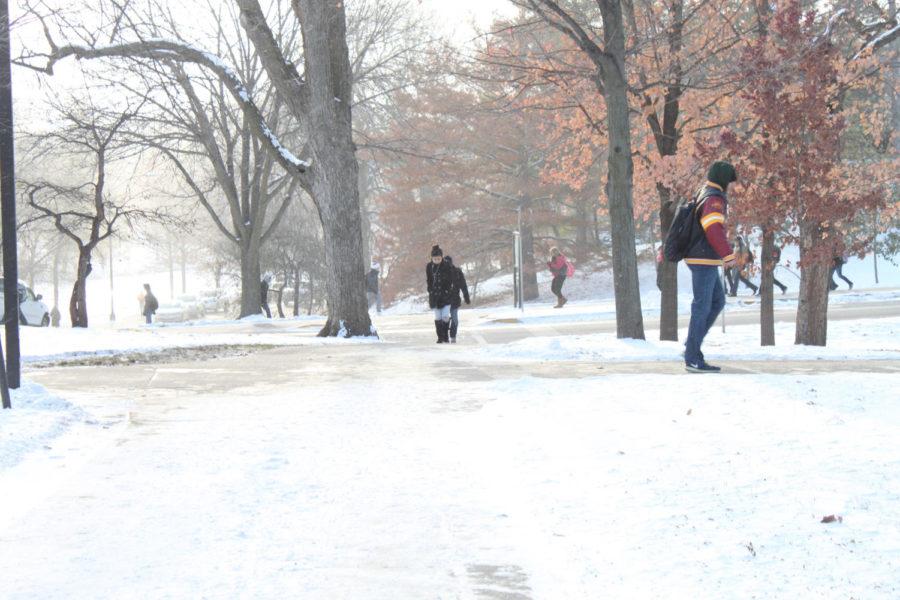Students give feedback on winter sidewalk management
A 50-man team joins up with the city of Ames and Ames Parks and Recreation in order to remove snow from sidewalks and roads. The groups used a variety of methods to clear snow from the sidewalks, including salt brines and sanders.
February 11, 2015
With the temperatures dropping, discussion about the state of the sidewalks on campus is heating up.
Some students said they feel that more should be done to keep the sidewalks clear.
“This morning, I almost fell flat on my face in the street,” said Alicia Wagner, junior in journalism and mass communication. “The effort is there, but the maintenance needs to be more frequent.”
Jeremy Schuster, junior in agricultural genetics, agreed.
“There’s a lot of salt and sand in places there doesn’t need to be and not enough in other places where there should be,” Schuster said.
Salt and sand are both used on campus, but have different purposes, said Lester Lawson, manager of campus services. Sand gives grip, while salt melts the ice. However, the use of salt depends on the temperature, as the salt only works if the weather is warm enough.
Campus Services’ first objective when it comes to keeping the sidewalks clear is snow removal, as it isn’t possible to salt or sand until the snow is gone.
Campus Services tries to maintain central campus first when it comes to sidewalk maintenance. A total of 15 truck routes cover campus, but do not extend to places like Campustown.
Campus Services repairs, replaces and maintains 23 miles of institutional roads, 162 acres of parking lots and 34 miles of sidewalks and bike paths throughout campus, according to the Campus Services website.
All university snow removal equipment has amber warning flashers and backup alarms.
According to Campus Services, “snow and ice removal is handled to the best of our abilities considering the availability of personnel and equipment.”
Campus Services has one supervisor on call at all times during the winter weather season to assess existing conditions, the forecast and university activities to determine how many staff members to call in and when to begin snow removal ice treatment when necessary.
Crews continue working throughout the day depending on conditions. Staff sometimes stay into the night to clear snow and ice. If snow becomes hard-packed by traffic, campus services applies sand and deicer to increase traction. Sidewalks that have been swept and/or sanded are safer than ones that haven’t been treated, the site states.
Sean Ross, sophomore in apparel, merchandising and design, said even after learning more about the process of keeping the sidewalks clear and dry, there is always room for improvement.
“While I appreciate the effort from campus services, I’m still unimpressed with the work they’re doing to make sure the sidewalks are safe and walkable, especially in intersections and on the way to campus,” Ross said. “From someone who used to live off campus, I’d like to see more work near the Towers and Frederiksen Court.”







